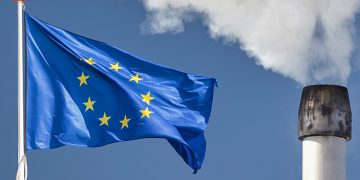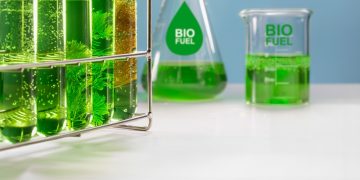During the 2024 SAFETY4SEA Manila Forum, Capt. Fanis Chatzikampouris, Vetting Manager & CSO, HSQE & Crew Dept Overseer at Arcadia Shipmanagement Co Ltd, presented on the challenges and requirements for seafarers in adapting to new technology systems on vessels’ engines and managing new fuels.
Much like COVID-19, which dominated our conversations three years ago, decarbonization is now a key focus. Just as we shifted our efforts from dealing with COVID-19 to addressing decarbonization, the shipping industry is undergoing a similar transformation.
Historically, ships sailed using sails, and the people who worked on these ships were called sailors. With the advent of steam engines and internal combustion engines, these sailors evolved into seafarers. Today, we are witnessing another shift back to sail-like propulsion, but this time with a focus on sustainability.
Apart from that, in the past few years there has been an effort to ensure the welfare of seafarers, with the industry focusing on the importance of soft skills, connectivity onboard, and other services to improve the living and working conditions of seafarers. Significant regulations have also been introduced, such as the Maritime Labor Convention (MLC), and the International Safety Management Code (ISM).
The shipping industry’s various propulsion methods
The global shipping industry is responsible for transporting 90% of global trade, supplying the world with food, fuel, medicines, and various goods. It accounts for 3% of global greenhouse gas emissions. After a long history of using wind, coal, and oil, the industry is now moving towards alternative low- and zero-carbon fuels and technologies to support global decarbonization goals.
Alas, no single alternative fuel can meet the entire maritime industry’s needs due to factors such as raw material supply, technology limitations, price competitiveness, stakeholder acceptance, and the diverse requirements of different vessel types. Various alternative fuels like methane, hydrogen, methanol, biofuels, and ammonia are being considered, each with their own advantages and challenges, including safety hazards that need to be overcome before widespread adoption.
Deciding on the right alternative fuel for new ships is challenging. For instance, while there is ammonia in Asia, it might not be available in the US, and methanol or hydrogen might be found in Europe but not in Asia. Given that ships operate globally, this poses a significant challenge.
Training and safety
Lack of clarity about the viability and uptake of alternative fuel options, along with uncertainty surrounding regulatory developments and financing, makes it difficult to plan effectively for the transition to a decarbonized future.
Regardless of which types of fuels are ultimately favored, certain measures need to be taken to support this transition. This includes additional training for thousands of seafarers up to 2050, investing in and enhancing maritime training establishments, providing proper facilities and equipment, and fostering competent maritime trainers.
To effectively operate new technology systems and manage the introduction of alternative fuels, seafarers will need adequate preparation regarding:
- Adequate skills for proper handling, so as not to represent a significant health and safety risk for crewmembers, ships, communities and the environment.
- Education, based on the decarbonization trajectory and the future fuel mix, or the vessel’s propulsion type.
- Awareness training and familiarization onboard, specific to the ship they are joining, relevant to the new technology systems on board, and the use of new fuels.
Safety challenges when handling alternative fuels
These new fuels come with a new set of handling and storage challenges that seafarers are to be faced with. For instance, alternative fuels require specialized storage tanks capable of handling high pressure and low temperatures. Hydrogen is more flammable than diesel, and ammonia is toxic to humans and the marine environment.
Furthermore, leaks may arise from fuel system components such as pipes, filters, pumps, valves, and flanges. A collision with another vessel may potentially damage the fuel tank, which is often exposed, and cause a leak. Lack of crew awareness and familiarization with new systems and equipment, including the design and management of work systems, workspace arrangements, and human-machine interfaces, poses additional risks.
Additionally, there is a lack of crew-specific training for combating leaks or fires related to these new fuels. Careless or unsafe actions by users highlight the industry’s current level of preparedness for using new types of fuels, including the readiness of bunkering barges’ crew, shore-based terminal personnel, fitters, and service contractors.
Thus, continuous emphasis on a ‘health-and-safety-first’ culture is key to protecting all seafarers on board ships, the communities in which shipping operates, and the operation of the vessels themselves. Significant health and safety risks must be incorporated into shipping companies’ safety management systems.
New training standards on the path to decarbonization
Focus should also be directed on strengthening and investing in national education systems to support the current and future generations of seafarers. Some countries have established “green jobs” initiatives to foster and support job creation and skills development. For example, the Philippine Green Jobs Act of 2016 provides incentives for skills training, which could be made available for maritime training institutions.
Moreover, the IMO International Convention on Standards of Training, Certification, and Watchkeeping for Seafarers (STCW) is scheduled for a comprehensive review in 2025, which will identify areas for revision, including replacing or updating competencies, knowledge, understanding, and proficiency in line with the shipping industry’s digital evolution.
Human factors considerations, training, and work practices
Specific training and upskilling will be needed to prepare the crew for the operation and maintenance of new-type-fueled vessels. Furthermore, safe work practices and standard procedures must be updated and implemented through systematic management of change programs.
Also, effective occupational health safeguards, such as personal protective equipment (PPE), need to be developed and implemented.
Additionally, appropriate safety management procedures for emergency response and other hazardous events must be established. Finally, suitable and sufficient technical barriers and administrative safeguards must be put in place to protect the crew against various risks associated with new-type fuels.
Looking forward
In conclusion, new and modified technical skills in understanding properties and hazards will be essential for those directly managing the transfer and handling of new fuels.
Responsible officers must enhance their knowledge of relevant regulations and special requirements, including interactions with flag administrations, contractors, and port/terminal personnel.
Additionally, there is a critical need to develop enhanced non-technical skills among all crew members, such as maintaining situational awareness and recognizing potential hazards that impact decision-making, communication, and leadership—essential for effective emergency preparedness.
Finally, shore-side company personnel, including fleet or ship managers, superintendents, and support functions, must also stay informed about specific requirements and adapt to ongoing changes in the industry.
Above article is a transcript from Capt. Fanis Chatzikampouris’ presentation during the 2024 SAFETY4SEA Manila Forum.
Explore more by watching the video presentation here below
The views presented are only those of the author and do not necessarily reflect those of SAFETY4SEA and are for information sharing and discussion purposes only.
































































